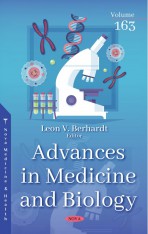abstract
Carbon tetrachloride (CCl4) is a strong chemical agent used in the industry for preparing chlorofluorocarbon refrigerants, semi-conductors and petrol additives, pesticides, fertilizers, and other agricultural chemicals. Although banned in 1970 in consumer products, a great number of them containing carbon tetrachloride are still available. However, its harmful effects on laboratory animals and human health are widely known. CCl4 is classified as possibly carcinogenic to humans (Group 2B) by IARC (1999) and it induces genotoxicity as well, which has been extensively reviewed. This chemical agent primarily targets liver and kidney although the grade of hepato-and nephrotoxicity depends on susceptibility, route and mode of exposure, diet and co-exposure to other compounds. Furthermore, it appears that pretreatment and/or post-treatment with several natural compounds such as plant extracts reduce the hepatotoxic action of carbon tetrachloride. On the other hand, in several preclinical studies, researchers have used CCl4 to experimentally induce damage to liver or other organs for the purpose of evaluation of the prophylactic or therapeutic properties of medicinal plants. In this respect a wide range of in vivo studies have been carried out in order to explore and to characterize the potential of medicinal plants or their bioactive chemical compounds per se, using different scenarios and approaches. This chapter illustrates a recent account of information available from several experimental studies showing application of CCl4 as an inducer of pathophysiological changes in key organs of the body and also the assessment of the regenerative effect of certain plant species. This chapter also includes some of our findings in this area wherein the different preparations/extracts from some medicinal plants such as Cichorium intybus L., and Inula crithmoides L. have been shown to exhibit significant protective and regenerative properties. Finally, this chapter proposes a set of cross-cutting research activities, as well as clues for future work aiming to better understand the role of medicinal plants in human health.
authors
Sonia M Rodrigues Oliveira, Elsa Dias, Henrique Fonseca,... Maria L Pereira



